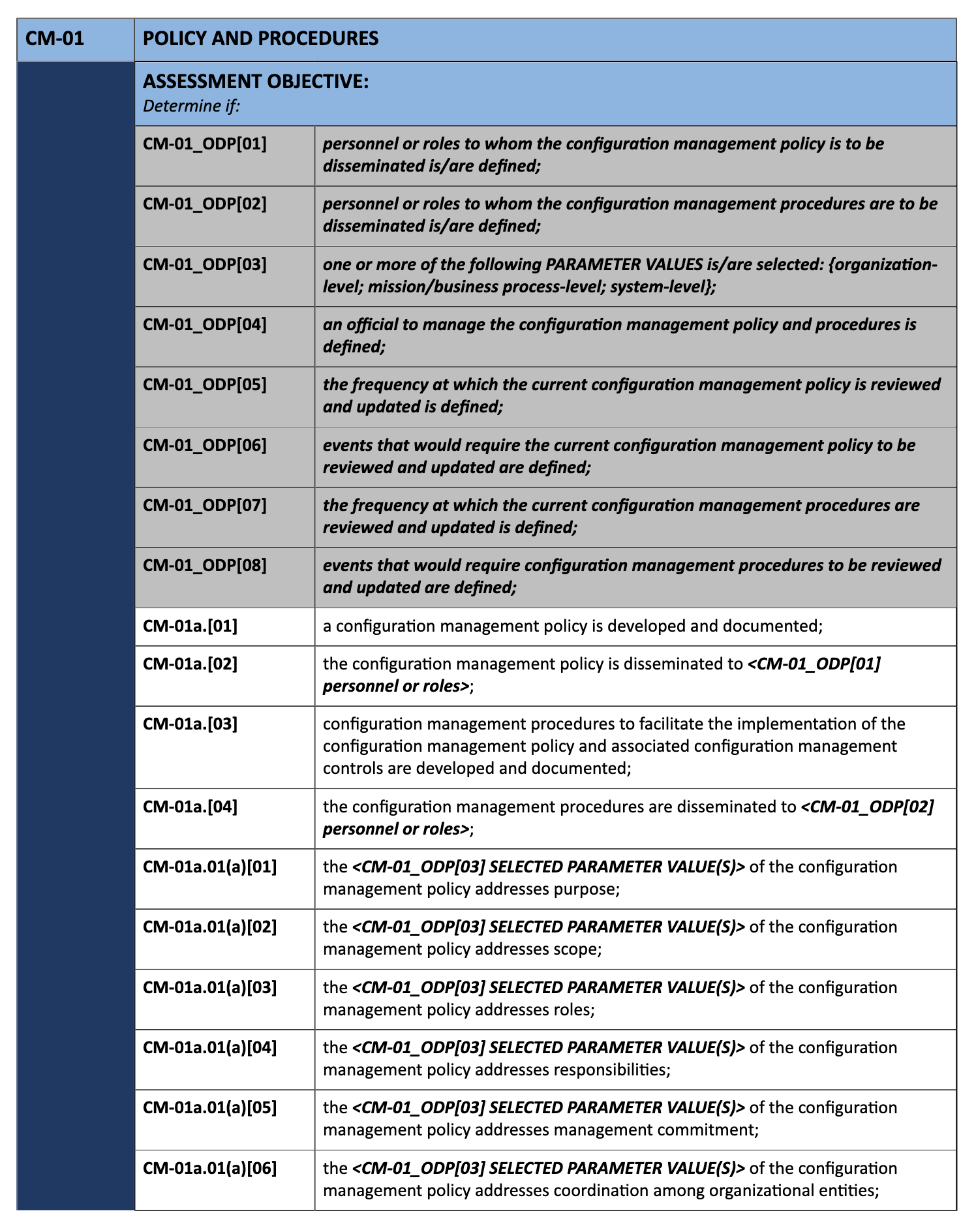Developing a Rubric to Assess Policies and Procedures for CMMC Compliance
People panic when it comes to policy and procedures and CMMC. Rightfully so. Compliance with NIST-SP-800-171 at a miminum requires fourteen different policies and fourteen different procedures. Probably More. In fact NIST recommends 39 different plans, policies, and procedures for 171 compliance.
While policy and procedures are not explicitly assessed by CMMC practices a majority of assessment artifacts imply the need for policy and procedures through explicit mention of document based specifications.
Yet few people write policy and procedures. Even less do it well.
To help you in creating compliant policy I have developed a series of “self-assessment” checklists for each Domain of CMMC.
Why Policy
Policy defines the governance of the systems you engineer to protect the confidentiality of Controlled Unclassified Information. Let us examine configuration management.
Overall configuration management policy communicate senior management’s expectations to the company. A good policy, regardless of domain must have specific, measurable, and confirmable objectives. Policies providea top-down approach to define what is required and what is not permitted with configuration management.
While policy defines the objectives for what must get done, procedures describe how the policy objectives get met through specific actions and results. Configuration Management procedures describe the methodology and tasks for each activity that supports implementation of Configuration Management policy.
As a company meeting CMMC requirements you should document your configuration management policy and procedures during your planning phase. In fact NIST-SP-800-171 requires you to regulary review all policies and procuedres.
What makes a Good Congifuration Management Policy
You can not check CMMC Assessment guides for help with writing configuration managment. You will not find your answers in NIST-SP-800-171, but 171 will tell you where to look,
In the back of NIST-SP-800-171 you will find Appendix E. This lists all the security controls the government assumes you do or controls they assume only apply to the federal government. These controls came from NIST-SP-800-53.
The very first base control of every family in NIST-SP-800-53 is policy and procedures. If you look at NIST-SP-800-53a you can find a list of requirements for compliant policy. This provides a wonderful tool for you to assess your current policy.
As a tool however it is hard to read.
Why A Configuration Management Policy Rubric
Self-assessment works in improving technical writing skills. We know from decades of research that theese metacognitive, or thinking about thinking, guides help to improve outcomes.
To design these rubrics I went through the objectives of each Policy and Procudure for each Family in NIST-SP-800-53. This information is required but not assessed for NIST-SP-800-171 nor assessed for CMMC but required evidence for a CMMC assessment.
Organization Defined Parameters
In order to be technology agnostic and provide a more holisitic approach NIST rarely defines rules around roles, events, and freqencies. Instead your policy and procedures must have clear organization defined parameters that get enforced in policy and procudures
In NIST-SP-800-53a these ODPs get explicitly defined and displayed in a table with the requirements but off set with grey shading. These requirements are just NFOd in NIST-SP-800-171.
The Requirements in NIST-SP-800-53a then spell out what should go into each policy

I tried to take this information and turn it into a checklist a company can use to evaluate their configuration management policy.